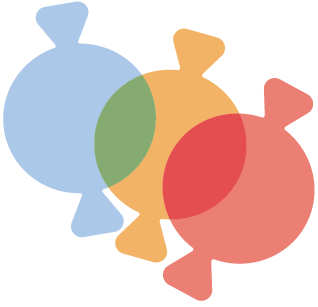May Is Apraxia Awareness Month
Did you know? May is Apraxia Awareness Month!
You may or may not have heard of Apraxia...because it is rare. It is estimated that less than 1,000 people in the United States have Apraxia (U.S. Department of Health and Human Services, 2023). Symptoms vary based on the communicator, but some of the most common symptoms include (U.S. Department of Health and Human Services, 2023):
- delayed speech and language development
- neurological speech impairment
- abnormal speech prosody - abnormalities in speech rhythm, intonation, volume variations, pausing, stress pattern, and articulatory force
- dysarthria - decreased articulation
- expressive language delay
- grammar-specific speech disorder - difficulties in automatically and accurately sequencing speech
- incomprehensible speech
- receptive language delay
When provided with adequate clinical speech and language treatment, those with Apraxia can improve speech and AAC can serve as a bridge between incomprehensible speech and comprehensible speech, while the speech of others may not improve with intervention and AAC may become their most effective and efficient method of communication (Child Apraxia Treatment, 2020).
Regardless of whether AAC use is short-term or long-term, communicators with Apraxia can benefit from AAC (Child Apraxia Treatment, 2020). Such benefits include:
- enhanced language development – the voice output paired with the symbolic representation of language in AAC devices fosters the development of receptive language skills. It also enhances the development of the communicator’s literacy skills as they simultaneously hear the word pronunciation while seeing its written form (Child Apraxia Treatment, 2020; Mirenda, 2008).
- decreased frustration – not being understood is frustrating to the communicator and their communication partners! AAC can be used to supplement or replace speech to repair or avoid communication breakdowns.
- enhanced confidence – communication may be undesirable if the communicator knows that communication partners will not be able to understand their speech. As AAC increases their ability to effectively communicate with more communication partners, their confidence and self-esteem in social situations grows.
- decreased anxiety – not being able to produce clear and consistent speech can invoke anxiety in communicators, especially in unfamiliar contexts and with unfamiliar communication partners. AAC can decrease such anxiety by providing the communicator with a consistent and reliable communication method understandable by all communication partners.
- enhanced communication skills – communication attempts are acknowledged and successful when using AAC. This increases the communicator’s motivation to communicate.
It is important for the communicator and their support team to remember that recommending and implementing AAC with those who have Apraxia is not a last resort and does not mean that functional speech and language will not develop. In fact, AAC enhances functional speech and language.
Every individual who has Apraxia is unique and their AAC journeys should reflect such uniqueness.
Do you have Apraxia and think your life could be enriched by using AAC? Do you know anyone who has Apraxia and think they may benefit from AAC? There is no better time to start the AAC journey other than Apraxia Awareness Month!
References
Child Apraxia Treatment. (2020). Augmentative and Alternative Communication (AAC). Child Apraxia Treatment. Retrieved April 19, 2023, from https://childapraxiatreatment.org/aac/#benefits-of-AAC
U.S. Department of Health and Human Services. (2023, February). Childhood apraxia of speech. Genetic and Rare Diseases Information Center. Retrieved April 19, 2023, from https://rarediseases.info.nih.gov/diseases/12889/childhood-apraxia-of-speech
Mirenda, P. (2008). A Back Door Approach to Autism and AAC. Augmentative and Alternative Communication, 24(3), 220–234. https://doi.org/10.1080/08990220802388263
